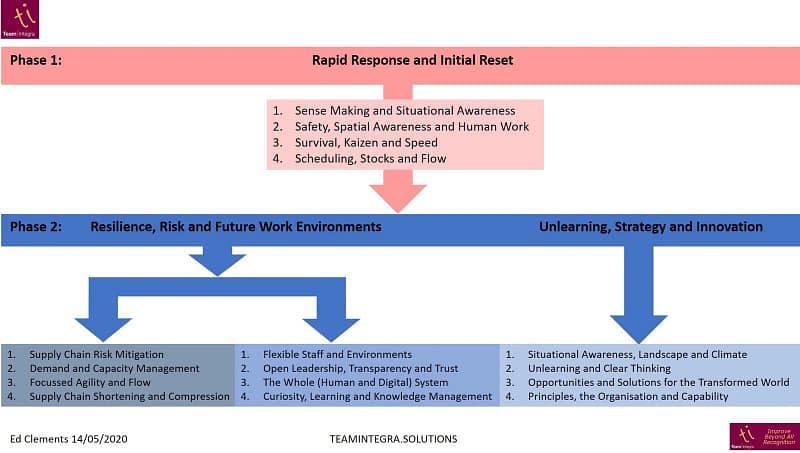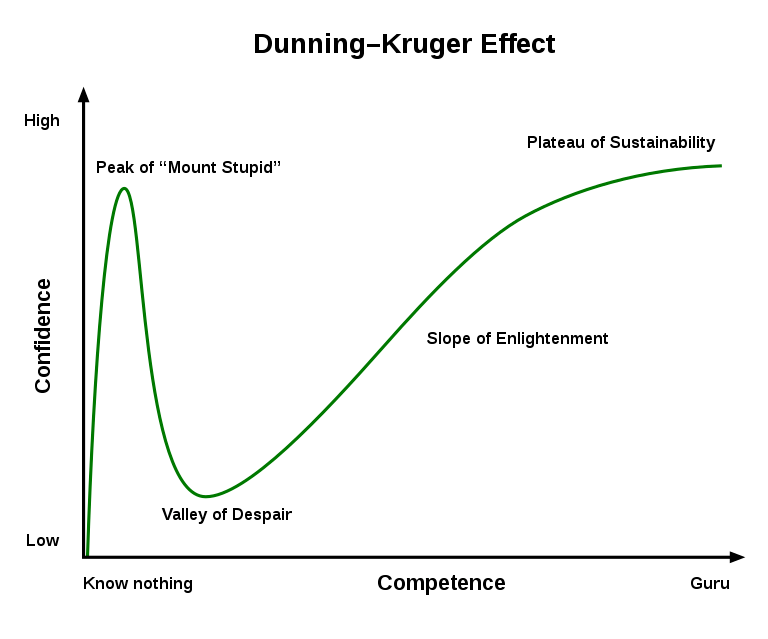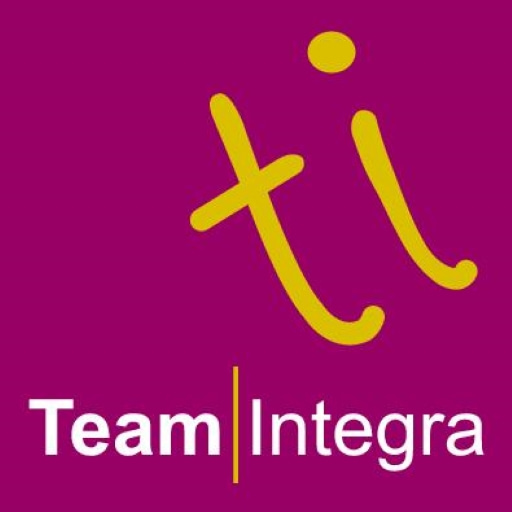Phase 1: Rapid Response and Initial Reset
Step 1: Sense Making and Situational Awareness 1

Self-Awareness and Staying on Safe Ground.
I want to start out by stating something obvious. I am not a biochemist or a medical expert. My foundation and 25 plus year career has been in engineering, teaching, coaching and improvement. I can legitimately and credibly discuss all those topics and will be. I will not be putting forward any opinions on epidemiology or medicine. There are many commentators and armchair experts that are willing to put their opinions forward. When I read these people and hear their opinions I immediately think of the cognitive bias described by the Dunning-Kruger effect.

In 1999, in the “Journal of Personality and Social Psychology”, the then graduate student Justin Kruger and his Professor David Dunning published a paper that documented this effect. They state how “in many areas of life, incompetent people do not recognise or cannot recognise just how incompetent they are”. In a 2014 article entitled “We are all confident idiots” Dunning summarises a symptom of the effect by saying, “Incompetence does not leave people disoriented, perplexed, or cautious. Instead, the incompetent are often blessed with an inappropriate confidence, buoyed by something that feels to them like knowledge.” He goes on to explain that their studies show that “people who don’t know much about a given set of cognitive, technical, or social skills tend to grossly overestimate their prowess and performance, whether it’s grammar, emotional intelligence, logical reasoning, safety, debating, or financial knowledge”.
Apparently, it can and will happen to us all. Dunning says that “Because it’s so easy to judge the idiocy of others, it may be sorely tempting to think this doesn’t apply to you. But the problem of unrecognised ignorance is one that visits us all”. Now is not a good time for the Dunning-Kruger effect to surface so I will stick to safe ground. I will be discussing thinking and models that can be used to form steps and actions that can be taken to address the situation we all find ourselves in.
At the “Peak of Mount Stupid” you can be at your Most Dangerous.
It is logical then when at the “peak of mount stupid” you can be at your most dangerous. In 2008 on his blog “Bits or pieces” Simon Wardley presented this tongue-in-cheek version of the Dunning-Kruger effect graphic titling it “the three stages of expertise”.

Simon Wardley openly admits it is not grounded in real data and is just a joke, however, as the saying goes…..”many a true word is spoken in jest”. We will be discussing some of Simon Wardley’s thinking about importance of situational awareness in the next blog.
Those of you that know me will have a wry smile at my advice regarding self-awareness but, I believe that it is very important that in deciding what to do and what action to take you are as self-aware as you can be. If you don’t have the knowledge don’t just assume, make sure you access the best expertise and advice you can from trusted, credible sources. You cannot fix this alone. Whilst understanding your limitations is important, we cannot ignore the pressing reality of the changes that have already taken place whilst we are endeavouring to increase our knowledge.
A Major Change has Already Happened and we had no say.
The world is a dynamic place and changes have already occurred that we need to acknowledge. Sometime at the back end of 2019, somewhere in the world, a virus causing an infectious disease was transmitted from one human to another, possibly, for the first time ever. That infectious disease is contagious and can readily be transmitted from human to human. The virus is not a living thing and it is, therefore, propagated and transmitted by us humans and our activities. We must be aware of the basics facts to ensure we are able to do the right thing.
The change that has happened wasn’t planned and is evolving in an episodic (event) manner. Some of the best known “change management” tools and techniques are less suited to a reactive, unplanned change that is already underway. In general, Kurt Lewin’s Three Phase Model and John Kotter’s eight steps encompass a degree of planning and positioning. William Bridge’s Transition model is probably better suited as it makes a real distinction between change and human transition.
Change is an External Event, we must Manage the Transition.
The Transition Model was created by change consultant, William Bridges, and was published in his 1991 book "Managing Transitions". In it he distinguishes between change and transition. He says that “change is the external event or situation that takes place: a new business strategy, a turn of leadership, a merger or a new product. The organisation focuses on the desired outcome that the change will produce, which is generally in response to external events. The change can happen very quickly”. He contrasts this with the human reaction to the change that he describes as transition, saying that “transition is the inner psychological process that people go through as they internalise and come to terms with the new situation that the change brings about. Empathetic leaders recognize that change can put people in crisis. The starting point for dealing with transition is not the outcome but the endings that people have in leaving the old situation behind.” The scale, speed and nature of the change has meant that many people will need to come to terms (transition) very quickly with individuals being asked to let go of the way things used to be for a while or maybe forever.
Again, it is important to remind oneself that societies and communities will judge their leaders by how they and their teams reacted to the unfolding coronavirus changes and manage the subsequent transition(s). In the next blog post we will move from the importance of self-awareness to situational awareness, sense making and how we can decide on the appropriate, context and knowledge-driven leadership decisions.
